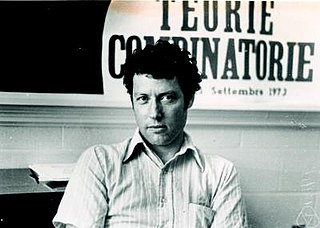Related Research Articles
The year 1971 in science and technology involved some significant events, listed below.

Nathan Jacobson was an American mathematician.
In algebra, a purely inseparable extension of fields is an extension k ⊆ K of fields of characteristic p > 0 such that every element of K is a root of an equation of the form xq = a, with q a power of p and a in k. Purely inseparable extensions are sometimes called radicial extensions, which should not be confused with the similar-sounding but more general notion of radical extensions.
Robert Steinberg was a mathematician at the University of California, Los Angeles.
In mathematics, Harish-Chandra's regularity theorem, introduced by Harish-Chandra (1963), states that every invariant eigendistribution on a semisimple Lie group, and in particular every character of an irreducible unitary representation on a Hilbert space, is given by a locally integrable function. Harish-Chandra proved a similar theorem for semisimple p-adic groups.
In mathematics, Cayley's Ω process, introduced by Arthur Cayley (1846), is a relatively invariant differential operator on the general linear group, that is used to construct invariants of a group action.

Patrick Dehornoy was a mathematician at the University of Caen Normandy who worked on set theory and group theory.
In algebraic topology, the doomsday conjecture was a conjecture about Ext groups over the Steenrod algebra made by Joel Cohen, named by Michael Barratt, published by Milgram and disproved by Mahowald (1977). Minami (1995) stated a modified version called the new doomsday conjecture.
The Classical Groups: Their Invariants and Representations is a mathematics book by Hermann Weyl (1939), which describes classical invariant theory in terms of representation theory. It is largely responsible for the revival of interest in invariant theory, which had been almost killed off by David Hilbert's solution of its main problems in the 1890s.
In mathematics, a modular invariant of a group is an invariant of a finite group acting on a vector space of positive characteristic. The study of modular invariants was originated in about 1914 by Dickson (2004).
In algebra, the Amitsur–Levitzki theorem states that the algebra of n × n matrices over a commutative ring satisfies a certain identity of degree 2n. It was proved by Amitsur and Levitsky (1950). In particular matrix rings are polynomial identity rings such that the smallest identity they satisfy has degree exactly 2n.
In mathematics, Birkhoff factorization or Birkhoff decomposition, introduced by George David Birkhoff (1909), is the factorization of an invertible matrix M with coefficients that are Laurent polynomials in z into a product M = M+M0M−, where M+ has entries that are polynomials in z, M0 is diagonal, and M− has entries that are polynomials in z−1. There are several variations where the general linear group is replaced by some other reductive algebraic group, due to Alexander Grothendieck (1957).
In mathematical representation theory, a Harish-Chandra homomorphism is a homomorphism from a subalgebra of the universal enveloping algebra of a semisimple Lie algebra to the universal enveloping algebra of a subalgebra. A particularly important special case is the Harish-Chandra isomorphism identifying the center of the universal enveloping algebra with the invariant polynomials on a Cartan subalgebra.
Claudio Procesi is an Italian mathematician, known for works in algebra and representation theory.
Lee Albert Rubel was a mathematician known for his contributions to analog computing.
In mathematics, a Takiff algebra is a Lie algebra over a truncated polynomial ring. More precisely, a Takiff algebra of a Lie algebra g over a field k is a Lie algebra of the form g[x]/(xn+1) = g⊗kk[x]/(xn+1) for some positive integer n. Sometimes these are called generalized Takiff algebras, and the name Takiff algebra is used for the case when n = 1. These algebras (for n = 1) were studied by Takiff (1971), who in some cases described the ring of polynomials on these algebras invariant under the action of the adjoint group.
Nolan Russell Wallach is a mathematician known for work in the representation theory of reductive algebraic groups. He is the author of the 2-volume treatise Real Reductive Groups.
Peter Paul Nikolas Orlik is an American mathematician, known for his research on topology, algebra, and combinatorics.

Thomas Henry Brylawski was an American mathematician and professor at the University of North Carolina, Chapel Hill. He worked primarily in matroid theory.
Wallace Smith Martindale III is an American mathematician, known for Martindale's Theorem (1969) and the Martindale ring of quotients introduced in the proof of the theorem. His 1969 paper generalizes Posner's theorem and a theorem of Amitsur and gives an independent, unified proof of the two theorems.